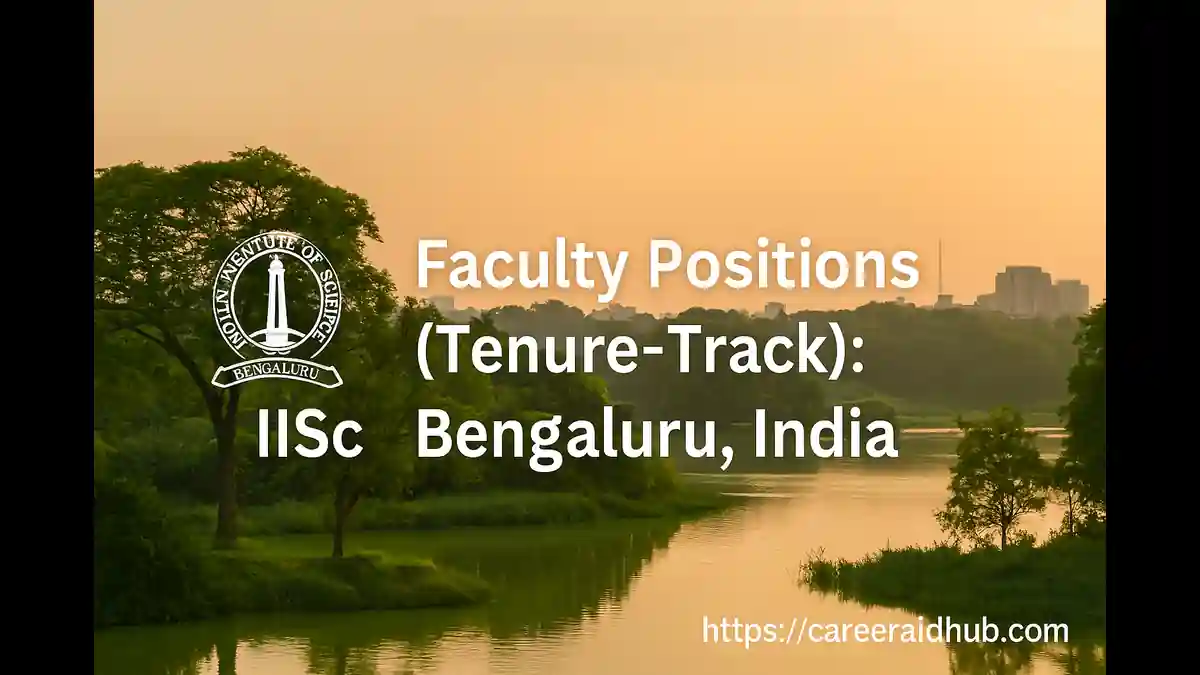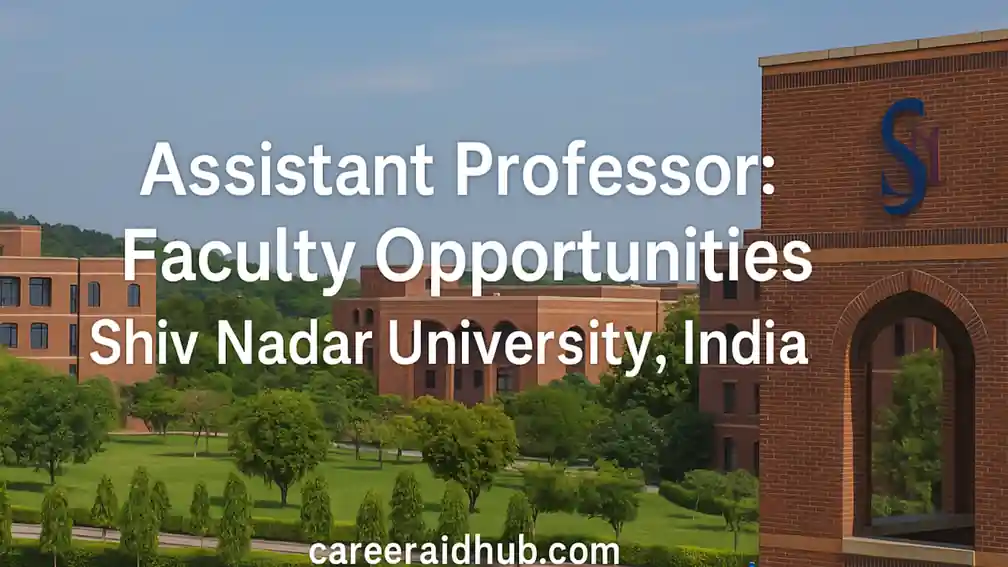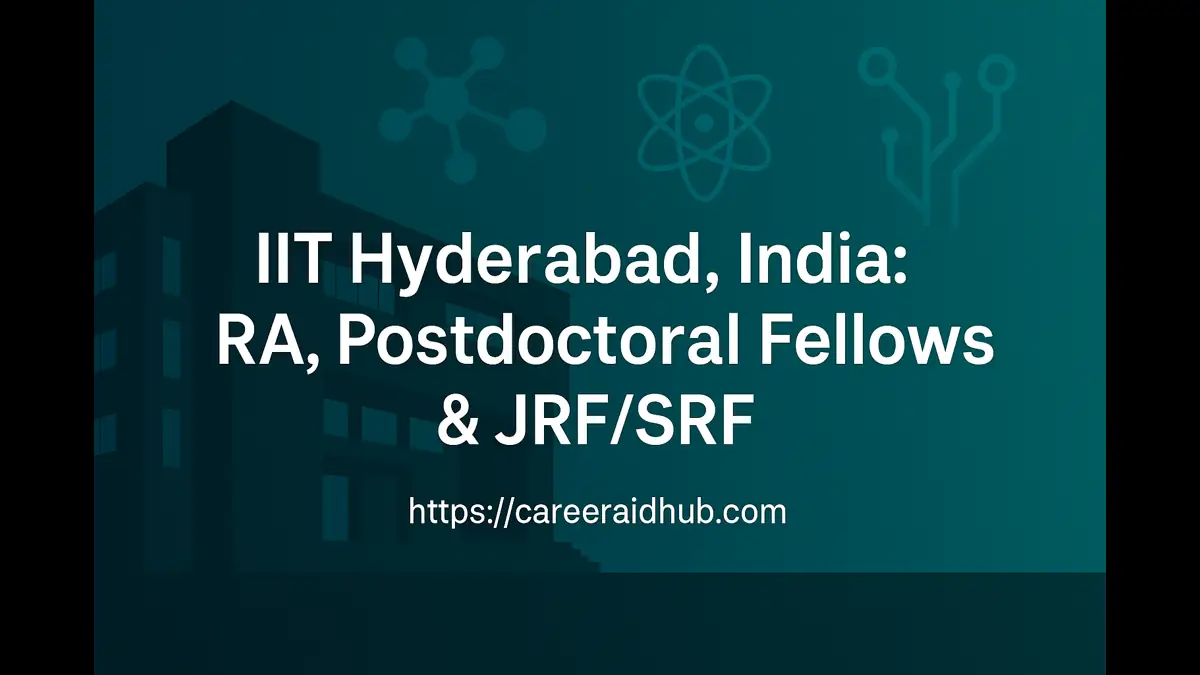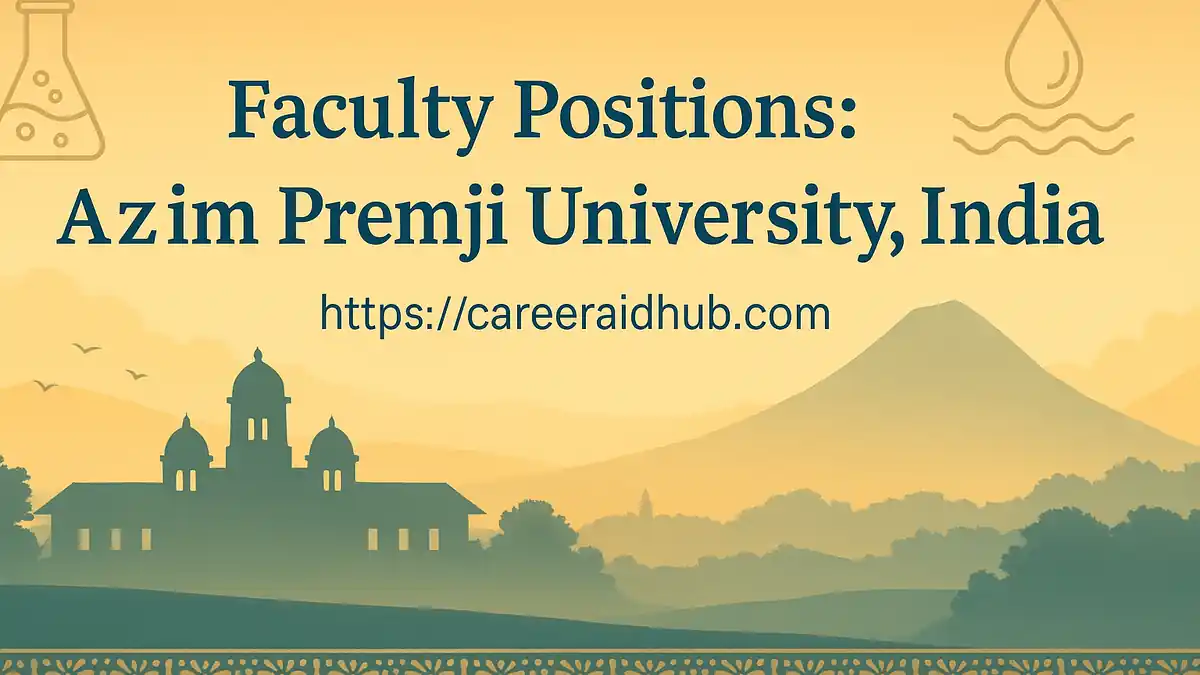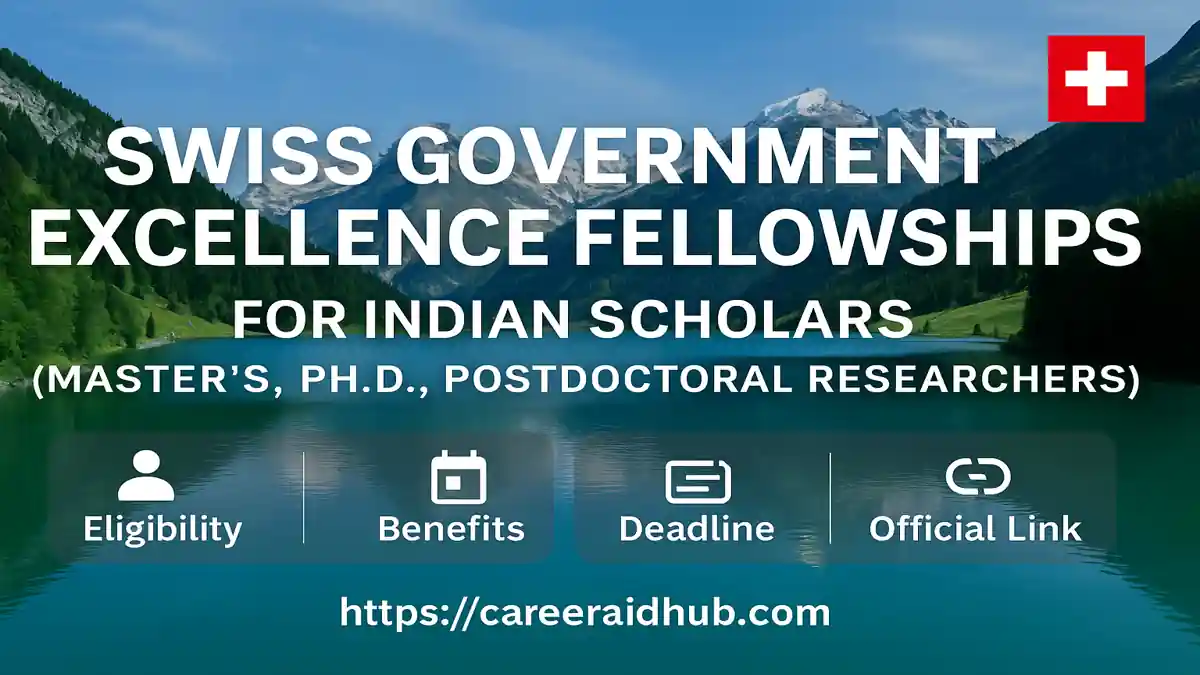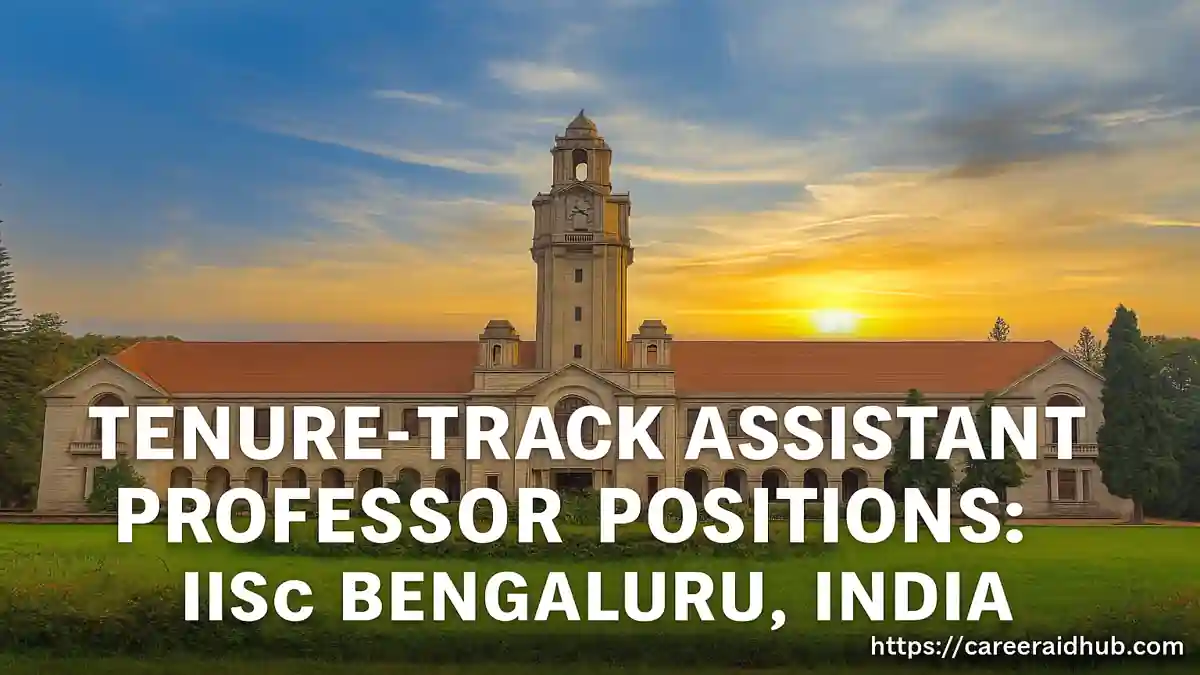Faculty Positions (Tenure-Track) — Department of Materials Engineering, Indian Institute of Science (IISc), Bengaluru
Why IISc MatEng?
IISc’s Department of Materials Engineering (MatEng) blends rigorous science with problem-driven engineering. Consequently, faculty thrive in a campus-wide research ecosystem that includes state-of-the-art central facilities, seed funding for new laboratories, and deep partnerships with allied units in engineering and the sciences. You will find a collaborative culture that encourages co-advising, shared instrumentation, and cross-listed modules, which together accelerate the transition from proposal to publication.
Join the Department of Materials Engineering at IISc, Bengaluru, on the tenure-track. The department invites exceptional scholars across metals, polymers, ceramics, composites, energy and electronic materials, computation, and additive manufacturing to build independent groups, teach brilliantly, and mentor graduate scholars. See scope, expectations, and the step-by-step application pathway.
A department built for depth and breadth
Core strengths: mechanical behaviour, phase transformations, electrochemistry, corrosion, processing and microstructure, polymer and composite systems, data-driven and computational materials.
Emerging thrusts: sustainable energy materials, circular materials, advanced and additive manufacturing, surfaces and interfaces, soft matter, and quantum/oxide electronics.
Graduate pipeline: coursework-intensive MTech and research-intensive PhD programs ensure early access to well-prepared students.
Who should apply (Eligibility in brief)
Doctorate and alignment. Applicants must hold a PhD in Materials Science/Engineering or a closely allied
Research record. Present a sustained body of impactful publications, preferably with leadership indicators—first/last authorships, independent ideas, patents, or translational outputs. Clarify what is uniquely yours and why it matters now.
Post-doctoral experience. Post-PhD research experience is typically expected. Therefore, indicate what you learned (techniques, facilities, group management) and how it enables your independent program at IISc.
Teaching readiness. Outline the undergraduate and postgraduate courses you can take ownership of, the laboratories you can modernize, and how you design assessments to build skills rather than rote recall.
Funding potential. Demonstrate familiarity with India’s funding landscape (e.g., SERB, DST, DBT, MeitY, MNRE), and sketch a credible first-year grant plan tied to specific calls.
Pro tip: Before you submit, introduce yourself to the department. Offer to give a talk, seek feedback on fit, and discuss facility access. This early engagement often strengthens your final dossier.
Tenure-track at IISc: what to expect
IISc operates a tenure-track system that emphasizes early clarity and periodic feedback. New faculty typically join as Assistant Professors and progress through scheduled evaluations toward tenure. Policies define timelines, evidence thresholds, and supportive provisions (including tenure-clock adjustments under eligible circumstances). Expectations balance quality, independence, and trajectory: committees look for a research vision with legs, a coherent teaching portfolio, and the capacity
The rhythm of the first years
Year 0–1: Set up lab; recruit initial students; submit a starter grant; launch one immediately feasible project.
Year 1–3: Publish flagship papers, diversify funding, co-teach a core course, and introduce a signature elective.
Pre-tenure review: Present an integrated case—ideas, outputs, mentoring, and departmental citizenship—supported by external letters.
Pay levels and benefits (indicative)
Appointments follow 7th CPC pay levels as notified by the Institute. Assistant Professor (Grade-I) appointments typically start at Level-12, with progression to Level-13A1 after three years subject to performance; senior cadres follow higher levels under Institute norms. Start-up support may include seed equipment, consumables, project staff, and prioritized access to central facilities (microscopy, nanofabrication, characterization, HPC). In addition, onboarding support helps you navigate procurement, HR, safety, and facility training so that your lab ramps up quickly.
Research ecosystem and collaboration opportunities
MatEng faculty routinely collaborate with Materials Research Centre (MRC), Centre for Nano Science and Engineering (CeNSE), Solid State and Structural Chemistry Unit (SSCU), Computational and Data Sciences (CDS), and several interdisciplinary centres. This adjacency enables ambitious proposals—grid-scale storage, corrosion
From idea to impact
Shared facilities: book time, train students, and collect publishable data early.
Industry interfaces: Bengaluru’s deep-tech ecosystem supports consultancy, testing, and translational projects.
Consortia and missions: National missions on energy, electronics, and manufacturing provide programmatic funding for multi-group teams.
What a competitive dossier looks like
1) Research statement (3–5 pages)
Anchor your vision in three work packages:
Immediate: an experiment/simulation you can start on day one using existing facilities.
Near-term: a growth project that leverages start-up funds and builds distinctive capability.
High-risk/high-reward: a bold direction that could redefine your area.
Specify facility needs, equipment costs, and collaboration points on campus. Use figures or schematics to convey flow—hypothesis → method → expected output.
2) Teaching statement (1–2 pages)
List two core courses you can deliver (e.g., thermodynamics, kinetics, mechanical behaviour, phase transformations, electrochemistry, computational materials) and two electives
3) Academic CV
Curate select, high-quality outputs. Indicate journal quartiles where appropriate, document DOIs, and summarize contributions in one line per paper. Add invited talks, patents/tech transfer, software/data releases, and mentoring markers.
4) Start-up plan & first-year timeline
Provide a month-by-month plan: procurement, safety SOPs, student recruitment, grant submissions, and initial manuscripts. Show that you can run a lab and ship results.
5) References
Include 3–4 referees who can attest to independence, originality, and leadership potential.
How to apply (step-by-step)
Study the MatEng “Prospective Faculty” page to understand expectations, scope, and contacts. Identify synergies with existing groups and potential co-advisors.¹
Prepare your dossier: CV, research and teaching statements, publication list, references, start-up plan, and a one-page lab-ramp roadmap.
Submit through IISc’s Faculty Recruitment portal (Science & Engineering). The Institute follows a rolling advertisement, and departments review applications periodically before inviting shortlisted candidates for seminars/interactions.⁷
Engage early: Write to the Chair expressing interest; request a virtual talk or visit to discuss facility access and joint initiatives.
Plan the visit: Prepare a research seminar, a chalk-talk on vision and methods, and a discussion on equipment choices, budgets, and safety.
Selection timeline and evaluation
Searches typically conclude within a few months, and the Institute continues to streamline the process. Panels evaluate originality, depth, independence, teaching preparation, lab feasibility, and long-term promise. Interdisciplinary work counts—provided your core remains sharp. Candidates with post-doctoral experience that demonstrates ownership of problems, not only techniques, tend to fare better.
Life and work in Bengaluru
IISc’s tree-lined campus in northern Bengaluru offers on-campus housing options, schools and crèches, sports complexes, and medical services. The city’s talent pool and infrastructure support strong industry partnerships and start-ups, while frequent academic events keep your group plugged into global conversations. For families, proximity to international schools and cultural neighbourhoods eases relocation.
Practical tips for candidates
Focus on India-relevant materials challenges. For instance, design corrosion-resistant alloys for monsoon climates or battery chemistries tailored to thermal extremes.
Show facility literacy. Map each aim to a technique, an instrument, and an analysis plan available on campus or via start-up funds.
Plan a first-year grant triad. Target a SERB start-up/CRG, one mission-aligned call (energy/AM/sustainability), and an industry project to seed recurring funding.
Demonstrate mentoring structure. Outline weekly group meetings, onboarding checklists, safety training, and data-management practices.
Engage before applying. A short talk to the department can refine your fit and sharpen your statements.
Where to begin
Review the Department of Materials Engineering — Prospective Faculty page, align your dossier to departmental priorities, and then submit your application through the IISc Faculty Recruitment portal. Shortlisted candidates will be invited for seminars and interactions with area faculty and Institute leadership. Conclude by checking portal updates periodically and keeping referees informed.
Program Snapshot (Quick Reference)
| Feature | Details |
|---|---|
| Program | Tenure-Track Faculty Recruitment — Department of Materials Engineering |
| Host | India |
| Funded | Indian Institute of Science (public research university) |
| Duration | Tenure-track pathway with periodic assessments per Institute policy |
| Mode | Full-time, on campus (faculty service with teaching and research) |
| Eligibility | PhD in Materials or allied fields; strong research record; teaching readiness; post-doctoral experience typically expected |
| Financial | 7th CPC pay levels; start-up grants; access to central facilities; project support as per Institute norms |
| Fields | Metals, ceramics, polymers, composites, soft matter, energy/electronic materials, computational/data-driven materials, additive manufacturing, surfaces/interfaces |
| Deadline | Rolling; the department and Institute review applications periodically |
| Official | Advertisement Faculty |
Review & update timeline
Quarterly check: Refresh details on policies, points of contact, and any new departmental thrusts.
Indicative next cycle: Rolling; historically, internal reviews cluster around Jan and Jul—we will update soon.
Change log: Add a banner when significant policy or portal updates are announced.
Conclusion
The tenure-track at IISc MatEng rewards clear ideas, careful execution, and a willingness to collaborate across disciplines. If you can articulate a distinctive research agenda, teach with purpose, and mentor the next generation, you will find the ecosystem to thrive in Bengaluru. Begin with the department’s official page and then apply through the Institute’s faculty recruitment portal.
Frequently Asked Questions
Submit the online form before the notified deadline; then, ensure both hard-copy sets reach the Establishment Department within the stipulated timeline.
Yes. Print, self-attest, paginate, and dispatch two complete hard-copy sets, including annexures and fee receipt, so they reach the University on time.
The ATR is the academic assessment form. After registering, generate it on the portal, then enter publications, experience, projects, and awards accurately.
Follow UGC norms for your subject. Typically, NET/SET or Ph.D. requirements apply, alongside discipline-specific conditions listed in the advertisement.
Verify the current fee on the payment page during application. Then, save and print the receipt for inclusion in both hard-copy sets.
Attach the signed application, ATR, degree certificates, experience proofs, category certificate if applicable, publication evidence, and the fee receipt, all paginated and indexed.
Yes, if eligible. However, submit separate applications per post or subject and strictly follow portal instructions for each.
Evaluators rely on ATR entries and matching annexures. Therefore, maintain consistent titles, DOIs, dates, and roles to support every claim.
Retain your application number. Then, log in periodically to the portal and monitor registered email or SMS for official updates.
Yes. Follow the advertisement’s reservation matrix, age relaxations, and certificate formats. Submit valid documents to claim benefits.

